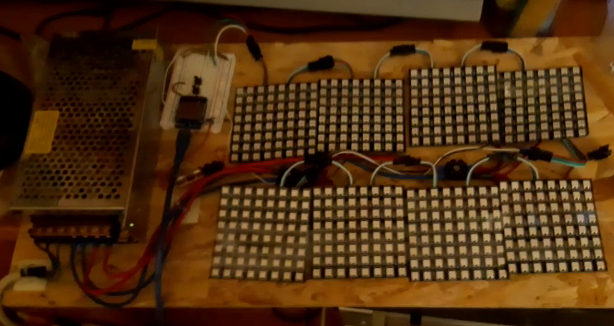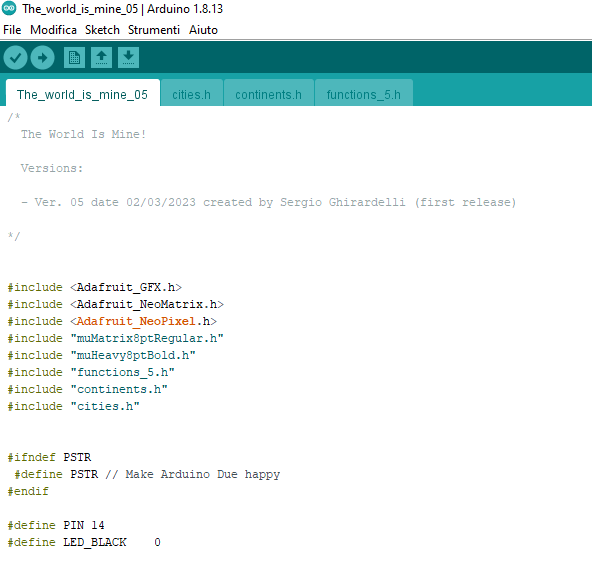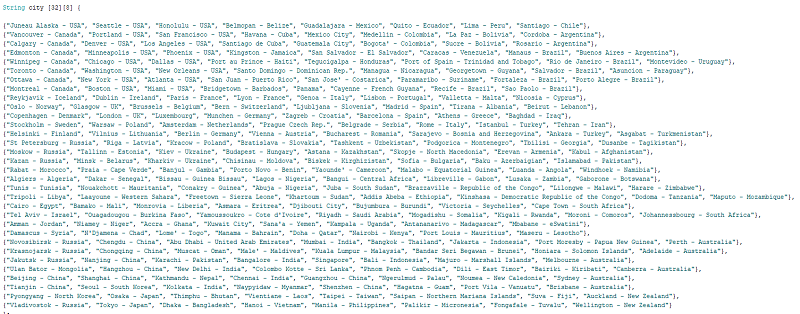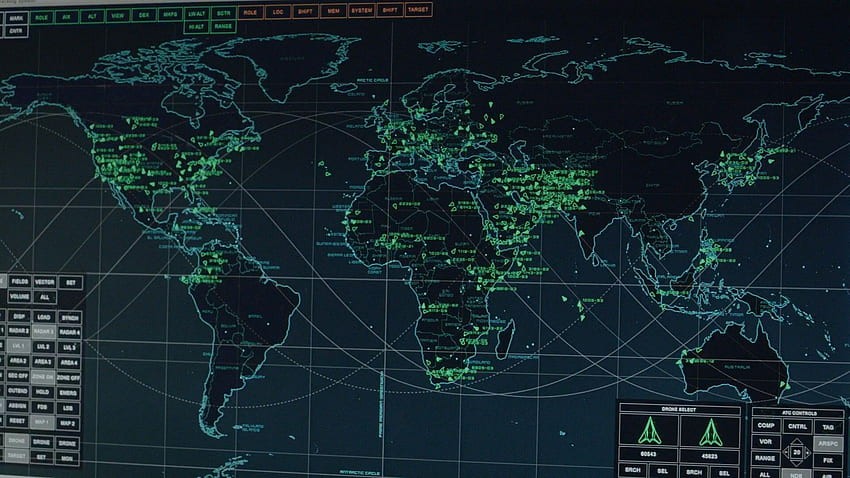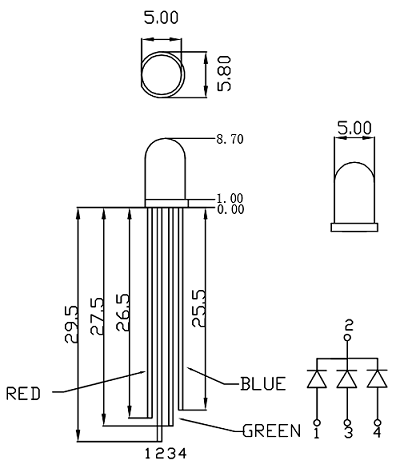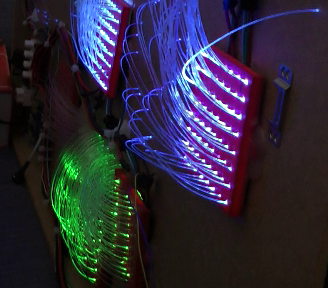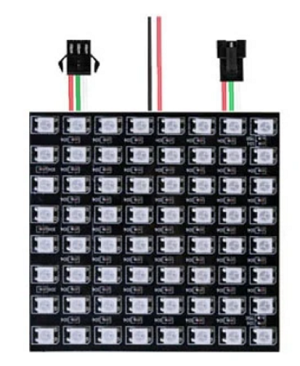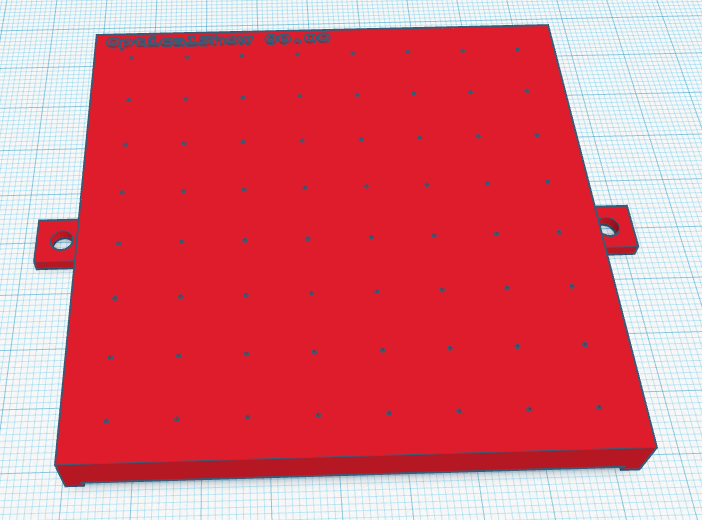-
The test bench
04/20/2023 at 17:54 • 0 commentsTo develop the hardware and software part of the project, I assembled a small test bench on a wooden base.
![]()
It is composed by:
• n.1 Switching power supply 5v 30A
• n.1 breadboard with ESP8266 Wemos Mini card and buttons
• n.8 8x8 WS2812B RGB led matrix
The development of the software with which I made the various animations of the map was made with the Arduino IDE tool.
![]()
Thanks to the Adafruit libraries: GFX, NeoPixel and NeoMatrix, I was able to easily animate each single LED (corresponding to a city on the map) and the scrolling texts of the 32x8 display that I created in the lower part of the map.
For the management, animation and visualization of all the cities on the map, I have associated them with the matrices, through the use of a bidimensional array of strings.
![]()
Switching from one animation to another is done by pressing a button.
In this video I show the first simulation tests...
-
The idea
04/16/2023 at 11:02 • 0 commentsI've been wanting to make an animated world map for a long time, like the ones you see in movies on the walls of the CIA headquarters (or in the rooms of madmen who want to conquer the world!)
![]()
In order to light up the capitals and major cities, I needed at least 200 lights.
Leds?
I immediately thought of LEDs, but these were the main contraindications:
- the dimensions of the leds, especially the RGB ones, were too high and would have covered the writing with the texts of the cities, forcing me to choose a very large format map, for which it is very expensive to find a suitable frame.
![]()
- fixing 200 or more led-holders would have been complicated, as well as soldering them one by one (2 wires per led = 400 connections!
- driving every single LED with a microcontroller would have forced me to use a very complex electronic circuitry, with shift registers.
Optical fibers
Walking through a shopping mall during the holidays, looking at a fiber optic Christmas tree, I finally had the inspiration I was looking for: why not take advantage of fiber optics? Why not transmit light?
![]()
Here are the advantages of this choice:
- small size: the fiber has a diameter of 0.75mm
- lightness and ease of installation: just drill and give a small dot of vinyl glue
- no soldering: a job within the reach of all hobbyists and not just electronics!
- possibility of using the fantastic WS2812B RGB LEDs as a light source, with their libraries for Arduino IDE: for example, using the 8x8 RGB matrices, with which I was able to create a 32x8 display with scrolling writing to make the world map more interactive!
![]()
OpticalShow project.
![]()
This choice led me to create the OpticalShow project: a 3D printed mask to be combined with an 8x8 matrix, through which each single RGB LED of the matrix transmits its light to the optical fiber.
 Sergio Ghirardelli
Sergio Ghirardelli